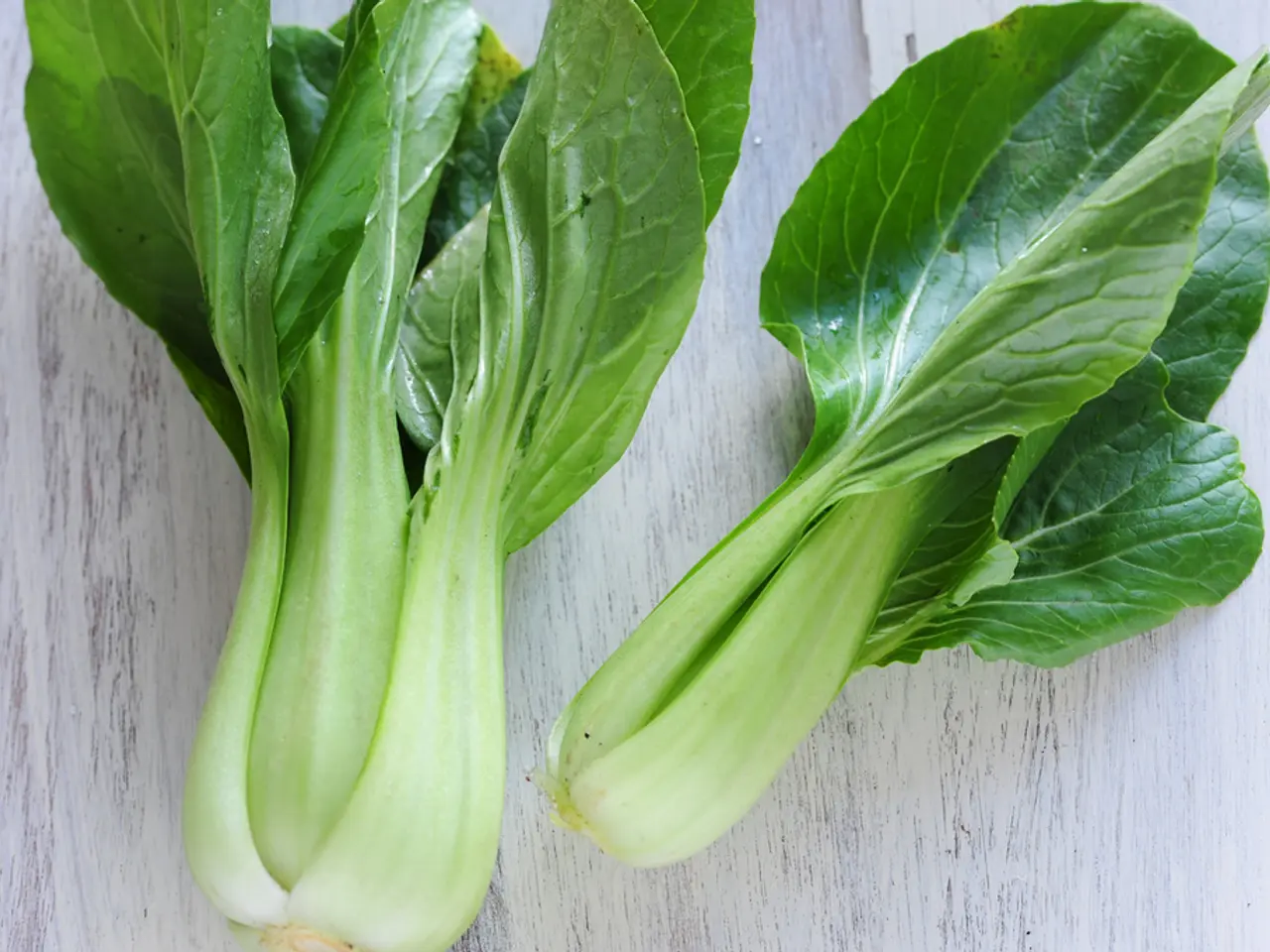Comparing Kale and Spinach: Health Advantages, Nutritional Content, and Added Insights
Kale and spinach are two popular leafy greens that have gained a reputation for their health benefits. While they share some similarities, they also have distinct nutritional profiles that set them apart.
Kale, for instance, is rich in vitamin K, offering a whopping 390 micrograms per serving. This vitamin is essential for promoting healthy bones and reducing the risk of osteoporosis. Kale also contains high amounts of fiber, antioxidants, and vitamin C, which help regulate blood pressure, reduce cholesterol, and lower inflammation, supporting heart health. Additionally, kale is relatively high in protein compared to most fruits and vegetables, providing 2.92 grams per serving.
On the other hand, spinach is a powerhouse of B vitamins and antioxidants. It aids in lowering blood pressure and protecting the cardiovascular system. Spinach is also rich in carotenoids like lutein and zeaxanthin, crucial for preventing age-related macular degeneration and protecting the eyes from UV damage. Moreover, spinach contains more than double the amount of folate as kale, making it an ideal food during pregnancy.
Both greens offer significant benefits for digestion. Kale's high fiber content can help improve digestion and ease constipation, while spinach, with its slightly softer texture when cooked, may be easier for some to digest.
When it comes to cardiovascular health, both greens are valuable due to their vitamin K and antioxidant contents. A 2019 study suggests that a diet high in fiber can lower heart disease risk in people with high blood pressure and type 2 diabetes. Additionally, a 2008 study found that drinking kale juice could improve coronary artery disease risk factors in men with high cholesterol.
It's worth noting that cooking kale with salt or oil may change the nutritional value slightly. Meanwhile, spinach is a common cause of E. coli outbreaks, highlighting the importance of proper handling and cooking.
In summary, kale and spinach are both superfoods that offer a range of health benefits. To maximize these benefits, try eating a salad mixed with several greens, or try a different green each day. By incorporating these nutrient-dense greens into your diet, you can support heart, bone, and eye health, aid digestion, and promote overall well-being.
Other dark leafy greens, such as collard greens, mustard greens, arugula, dandelion greens, bok choy, rapini, Swiss chard, turnip greens, and more, offer a similar nutritional profile to kale and spinach. So, feel free to experiment with these greens to keep your meals interesting and nutritious.
- For those with workplace-wellness programs, incorporating kale or spinach into meals can provide vital nutrients to combat chronic-diseases.
- Cancer research has shown that a diet rich in vitamins and antioxidants, found in kale and spinach, may reduce the risk of certain types of cancer.
- Respiratory-conditions like asthma can benefit from the antioxidant properties in dark leafy greens like kale and spinach.
- Eye-health can be improved by consuming lutein and zeaxanthin-rich foods such as spinach to prevent age-related skin-conditions like macular degeneration.
- Hearing loss, often associated with aging, may be delayed or reduced by maintaining a balanced diet that includes nutrient-dense greens like kale and spinach.
- Health and wellness, in general, can be enhanced by including foods like kale and spinach in your diet, as they deliver essential vitamins, minerals, and antioxidants for overall well-being.
- Fitness and exercise go hand-in-hand with a healthy diet, and adding kale or spinach to meals can help fuel the body for optimal performance.
- Autoimmune-disorders, such as rheumatoid arthritis and lupus, may find relief through a diet rich in anti-inflammatory agents found in leafy greens like kale and spinach.
- Men's health can be supported by consuming kale, which contains a higher amount of certain nutrients compared to spinach, such as vitamin A and calcium, essential for prostate health.
- Skin-care benefits are plentiful in both kale and spinach due to their rich vitamin A, C, and antioxidant content, promoting healthy, radiant skin.
- The therapies and treatments for numerous medical-conditions often involve a focus on nutrition, making greens like kale and spinach essential components of such plans.
- With the rise of chronic-diseases like diabetes and heart disease, focusing on foods that support cardiovascular-health, such as kale and spinach, has become increasingly important.
- Medicare beneficiaries can take advantage of the nutritional benefits of kale and spinach to improve their overall health and wellness.
- CBD products, while not a substitute for a balanced diet, can work synergistically with the nutrients found in kale and spinach to promote neurological-disorders relief and support a healthy lifestyle.
- Skin-conditions like acne, eczema, and psoriasis may be improved by incorporating foods rich in antioxidants, vitamins, and minerals, found in kale and spinach, into your diet.
- Interiors designed with a focus on health and well-being can incorporate elements of sustainable-living, such as a well-stocked kitchen where kale and spinach are readily available and accessible.
- For those practicing the art of cooking, experimenting with kale and spinach in various food-and-drink, dining, and home-and-garden related scenarios is an excellent way to reinforce a healthy lifestyle.
- Global cuisines offer endless opportunities to discover unique ways to incorporate kale and spinach into recipes, broadening your culinary horizons and enhancing your healthy-cooking repertoire.
- Certain recipes may call for the addition of kale and spinach to promote healthy cooking and emphasize the importance of a balanced, nutrient-dense diet.
- Pets, too, can benefit from a diet that includes kale and spinach, as they are rich in essential vitamins and minerals for overall pet health.
- Deals-and-discounts on organic produce, such as kale and spinach, can make it financially accessible for more people to incorporate these superfoods into their diets.
- Electric vehicles, like cars, are integral components of a sustainable-living lifestyle, while healthy, nutrient-dense products like kale and spinach help maintain our physical well-being as we partake in outdoor-living and enjoy our food-and-drink and dining experiences.




